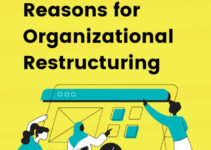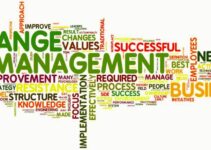Coca-Cola is a soft drink manufacturing US multinational corporation. John Stith Pemberton founded the soft drink brand Coca-Cola in 1886. Today, we’ll discuss the McKinsey 7S framework of Coca-Cola as a 7S framework in strategic management and change management; strategy, structure, system, staff, style, skill, and shared values of the McKinsey 7S model with Example Company.
Products and Services of Coca-Cola
- Coke Zero
- Suge
- Ciel
- Sprite
- Georgia
- Honest Tea
- Golden Peak Tea
- Coca-cola
- Powerade
- Del Valle
- Odwalla
- Fanta
- Glaceau Smartwater
- Dasani
- Beverages
- Zico
- Diet Coke
- Glaceau Vitamin Water
- Minute Maid
- Fair Life
- Mellow Yellow
Subsidiaries of Coca-Cola
- Coca-Cola’s annual revenue was 45.030 billion USD in 2023
- Out of which, the net profit of the soft drink company was 10.772 billion USD
- Coca-Cola employed roundabout 83000 employees to manage its global operations
- The net worth of Coca-Cola is 92.07 billion USD
Statistical facts and figures of Coca-Cola
- Refreshment Products Finland Oy
- Limca
- Thumbs Up
- Embotelladora Andina
- Diamond Beverages Pvt. Ltd.
- International Beverages Pvt. Ltd.
Top Competitors and Rival Companies of Coca-Cola
- Dr. Pepper Snapple
- Nestle
- Gatorade
- Redbull
- Pepsi
- Mountain Dew
- Parle
McKinsey 7S framework of Coca-Cola would analyze the elements of the 7S framework in strategic and change management; strategy, structure, system, styles, staff, skill, and shared values. Here’s the Coca-Cola McKinsey 7S model with Example Company as follows;
McKinsey 7S Framework of Coca-Cola
Let’s discuss the McKinsey 7S framework of Coca-Cola McKinsey 7S model with Example Company or 7S framework in strategic management and change management; they’re as follows;
Strategic of Coca-Cola
Some of the main elements of Coca-Cola’s organizational strategic approach is one of the key elements of the 7S framework in strategic management in the McKinsey 7S model with example as follows;
I-Marketing Strategy
Coca-Cola is the world’s leading soft drink manufacturing brand it supports all of its subsidiary products. The company develops close alliances and partnerships with retailers by bringing cola drinks closer to them through vending machines. However, the company employs different distribution strategies to cover the market.
II-Development Strategy
In order to achieve cost efficiency, Coca-Cola integrates its bottling manufacturing unit vertically. The latest technological tools and equipment support and facilitate the supply chain operations of the company on a global scale.
III-Talent Management Strategy
The employee turnover rate is higher and the company couldn’t connect with its workers and employees to decrease the rate. Coca-Cola should carefully develop and manage its policies to increase the retention and growth rate.
IV-Cost Efficiency
Streamlining cost efficiency at the bottling and production facilities helps the company to ensure quality products and services for the customers.
V-Portfolio Expansion
In order to decrease the risk factor, Coca-Cola acquires various Asian and Chinese fruits and vegetarian brands to strengthen its position in the Asian-Pacific market.
Structure of Coca-Cola
Some of the main elements of Coca-Cola’s organizational structure is one of the key elements of the 7S framework in strategic management in the McKinsey 7S model with examples as follows;
I-Division
Coca-Cola has segmented its market into different divisions in various geographical regions and markets across the world. The head office has the obligation of offering guidelines and direction to all the regional divisions. The soft drink brand follows both a centralized and decentralized approach. However, every division would serve as a separate product line and they would report to the country’s manager.
II-Decision Making
Multiple departments and units play a key role in the decision-making process of the company for the local and national markets. For instance, the company launches its marketing campaigns in different languages; it shows the regional decision-making structure of the company.
System of Coca-Cola
Some of the main elements of Coca-Cola’s organizational system is one of the key elements of the 7S framework in strategic management in the McKinsey 7S model with examples as follows;
I-Daily System
Along with daily reviews, analysis, and reporting systems, Coca-Cola takes various steps and activities at the management level to provide information about the results. The daily management system helps the company to exploit the opportunity to meet and align with the company’s targets.
II-Process System
Every departmental unit of Coca-Cola has the obligation of segmenting various tasks into manageable activities. The benchmarking 6P initiative comprises of following elements;
- Profit
- People
- Portfolio
- Partners
- Planet
- Productivity
Staff of Coca-Cola
I-Recruitment & Retention
Coca-Cola has analyzed its business strategy for employee retention and recruitment by offering clear career-oriented opportunities. The company manages and controls the performance improvement system. In order to promote innovation and creativity among workers, Coca-Cola implements the roles and activities of its employees. The company provides various types of incentives to boost the morale and confidence level of employees.
Skill of Coca-Cola
I-Innovative & Creative Approach
Coca-Cola implements various types of creative and innovative strategies to achieve its goals and objectives. They’re like innovative efficiency, mass volume, healthcare trends, and new preferences. However, they show various activities that the company performs in different stages.
Style of Coca-Cola
I-Coke Society
Coca-Cola has developed a “Coke Society” with the style and objective of “one love, one team, and one business.” One business means that the company provides sufficient learning opportunities to its employees so that they can perform better. However, one team means developing an association with a job development partnership. One love comprises of following elements;
- Security
- Earth preservation
- Community support
- Brand sustainability
Shared Values of Coca-Cola
The mission of Coca-Cola is to develop new beverages relevant to the needs, wants, and tastes of customers. The company’s dream plan comprises of 6P elements; productivity, planet, partners, portfolio, people, and profit.
Conclusion: Coca-Cola McKinsey 7S Framework in Strategic Management |McKinsey 7S Model With Example
After an in-depth study of the McKinsey 7S framework of Coca-Cola; we have realized that Coca-Cola is the world’s leading soft drink manufacturing brand. If you are learning about Coca-Cola McKinsey 7S framework in strategic and change management; then you should keep in mind the abovementioned elements; strategy, structure, system, staff, skill, style, and shared values.
Ahsan is an accomplished researcher and has a deep insight in worldly life affairs. He goes Live 3 days a week on various social media platforms. Other than research writing, he’s a very interesting person.


